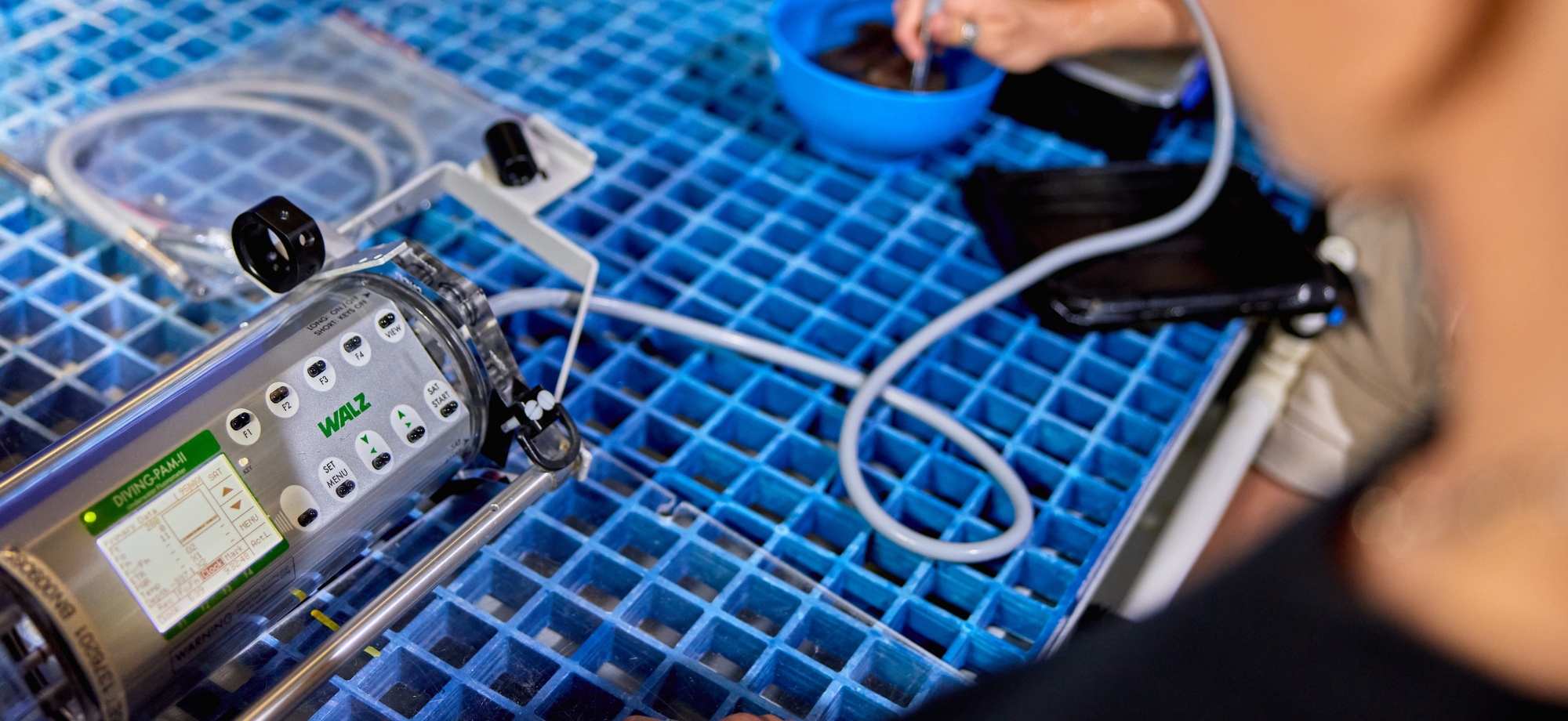Active fluorometry is a technique that allows for rapid and non-invasive evaluation of the photosynthetic performance of marine organisms (e.g., corals, seagrass and macroalgae) by measuring fluorescence emanating from Photosystem II (PSII).
Use of active fluorometry in marine ecophysiology has played a significant role in understanding the responses of benthic autotrophs to environmental change. A range of portable fluorometers exist that are broadly categorised into two methods according to how they manipulate the PSII redox state:
- Fast Repetition Rate (FRR), and
- Pulse Amplitude Modulated (PAM) fluorometry.
PAM Fluorometers at SeaSim
SeaSim can provide researchers with access to several variants of PAM fluorometers including the Diving-PAM, Imaging-PAM and Microscope-PAM for use with various organism sizes/types (e.g., from single-cell Symbiodiniaceae to full-sized adult coral colonies).
Incorporation of fluorescence measurements allows researchers to monitor organism physiology over the course of an experiment – either as a baseline measurement to satisfy reviewer expectations, or as a key response variable.
For example, a fluorescence parameter of relevance to many studies is the maximum quantum yield of Photosystem II (PSII), termed FV/FM which provides a broad descriptor of organism “health” and is sensitive to environmental stress.
PAM fluorometry can also be used to probe photosynthesis vs. irradiance (PE) responses by measuring photosynthetic electron transport rates (ETRs) without the need for discrete incubations. By performing fluorescence measurements in both the dark and light “acclimated” states can also be used to tease out more nuanced physiological responses by e.g., examining both photochemical (PQ) and non-photochemical quenching (NPQ) processes.
Fluorometry Training and Induction
SeaSim Research Technicians are trained in the operation of PAM fluorometers and can provide instrument inductions and provide assistance with experimental measurements if required.
The SeaSim Research Aquarist can also advise on the development of specific PAM measurement protocols to target a specific research question.

